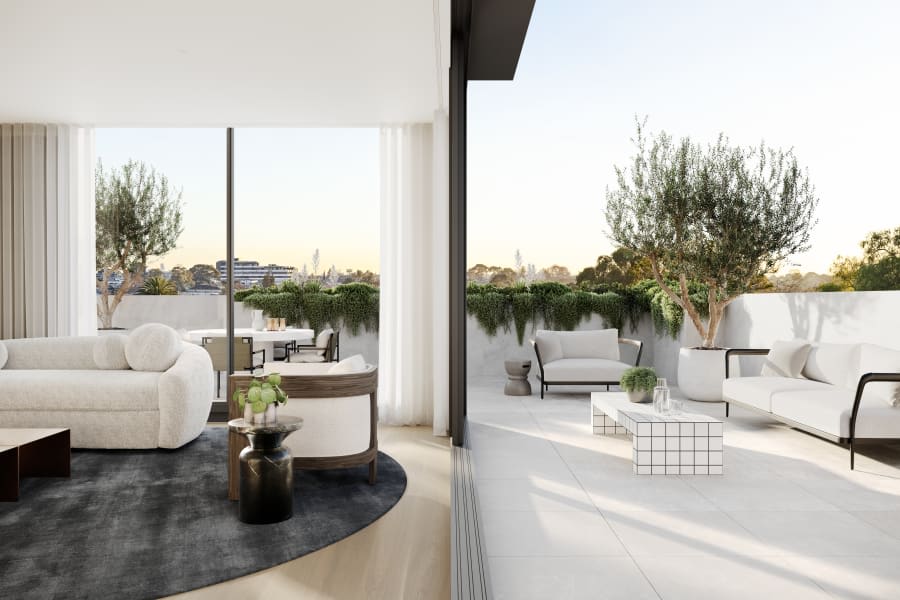Highett Common: Victoria's first Net Zero Carbon community
Highett Common, the latest project by prominent Melbourne developer Sunkin, is set to deliver a sustainable and green community to the sought-after Bayside area.
Designed by ClarkeHopkinsClarke, the Highett Common precinct will become the first medium density, Net Zero Carbon community in Victoria, and the largest development outside Melbourne’s CBD to shift to all-electric.
The precinct will feature homes that achieve high NatHERs ratings and a range of initiatives that encourage physical activity and reduce the need for vehicle travel while lowering emissions.
The biophilic design adds landscape revegetation with cooling greenery, providing privacy while reducing reliance on artificial heating or cooling.
Residences are oriented to maximise natural ventilation and light entry, while facades provide greater solar protection. The built elements of the precinct will include recycled, low VOC, and sustainable locally sourced materials. Provision for solar panels will provide the option to harness renewable energy, while water and energy-efficient fixtures, fittings, and appliances lower residents’ consumption.
Rainwater harvesting assists water use for toilets and irrigation, and improved waste management strategies are incentivised to include better separation of waste for less landfill. The outcome is a minimisation of each home’s environmental footprint, along with reduced utility bills.
Infrastructure for EV charging stations and secure bicycle parking encourages better commuting practices, and a commitment to green power initiatives through passive design techniques not only creates healthier living spaces but also reduces waste and costs, leaving a lighter environmental footprint.
The precinct has also committed to removing the use of fossil fuels and will rely solely on electricity to power homes, with induction cooking for the kitchen and electric or solar power for hot water.
Additionally, the project will feature sustainably sourced timber and steel, manufactured and sourced locally and through resource-efficient processes.
Green spaces will cover over 40 per cent of the site, offering a rare opportunity to live in an urban location that boasts as much greenery as built space.
The precinct's location on Highett Road, with a retail precinct and train station, provides a walkable community where residents can commute and access daily essentials without relying on a car.
A collection of townhouses will also be released in the community, boasting solar provision and rainwater tank provision, encouraging residents to use solar panels and rainwater storage systems to reduce their environmental footprint.
The townhouses are also set to feature double-glazed, thermally efficient, quiet windows and glass sliding doors that offer climate and noise protection.
